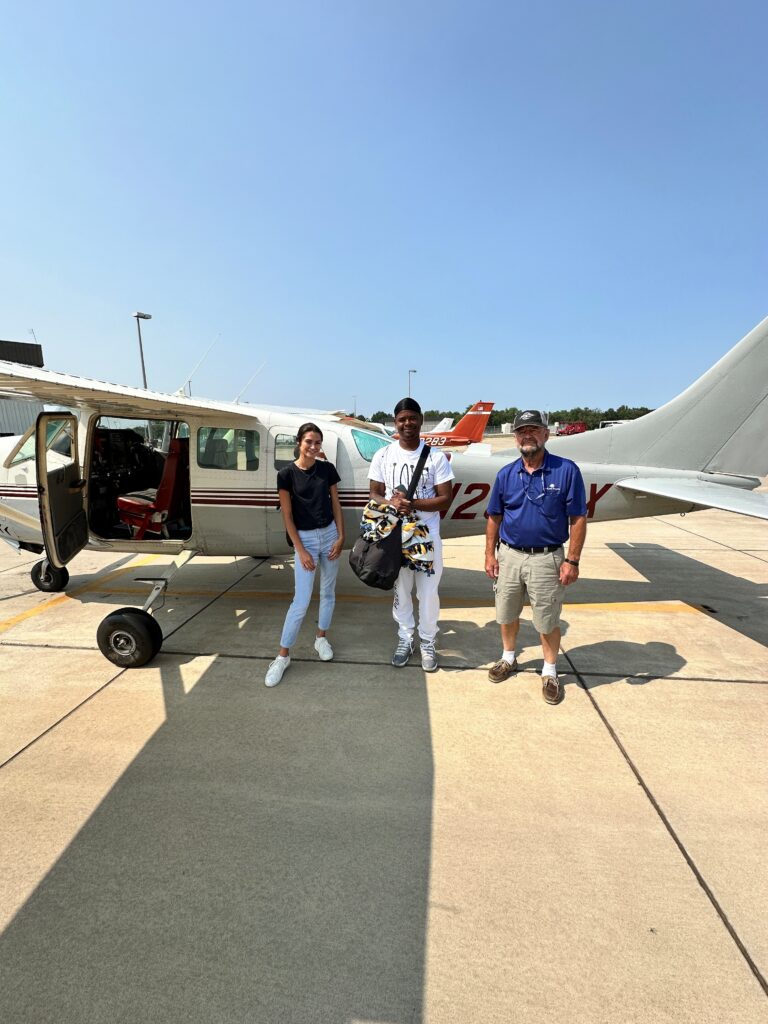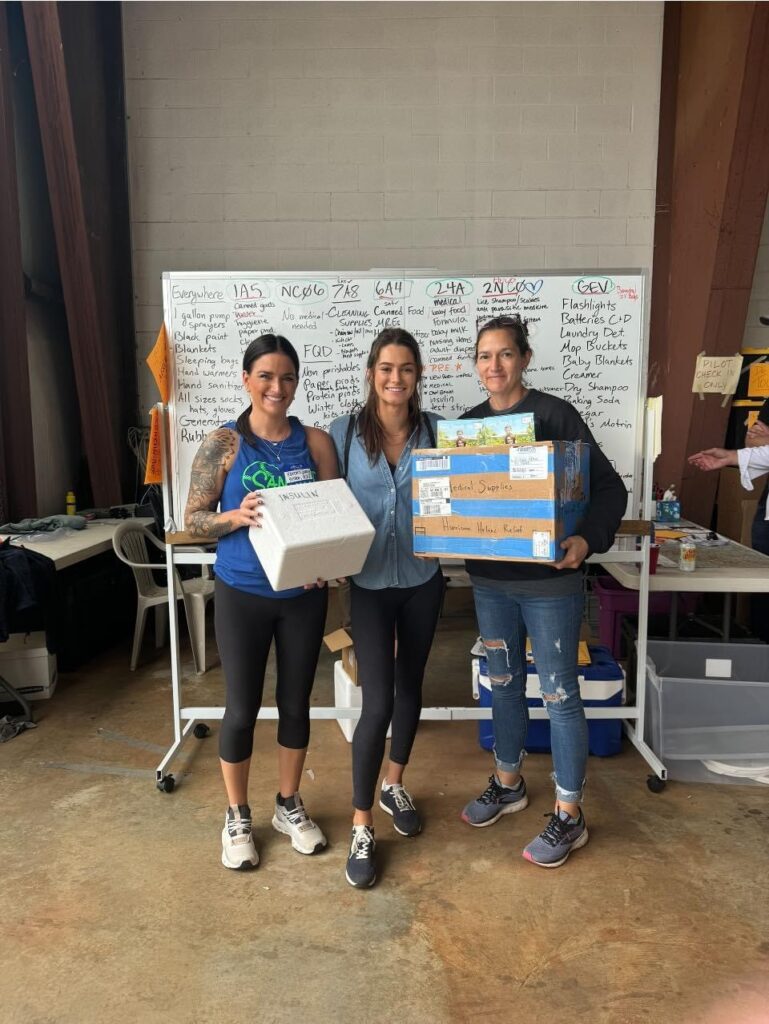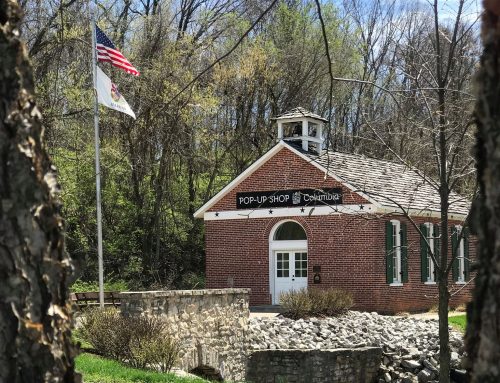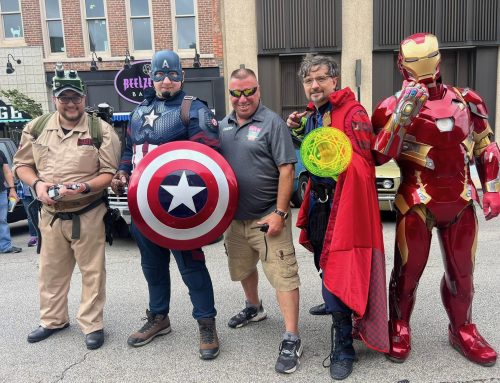
Casey took on an extra volunteer flight while in North Carolina to deliver insulin and another 400 lbs. of needed supplies.

Casey Throne recently fulfilled her dream of becoming a pilot and is now a volunteer for LifeLine Pilots.

Casey flew to North Carolina to take hurricane relief supplies. She took on an extra volunteer flight while in there to deliver insulin and another 400 lbs. of needed supplies.
By Tara L. Simmons
Over 2.5 million young people have enjoyed a free introductory flight through the Young Eagles program since its introduction in 1992. Made possible through the generosity of EAA (Experimental Aircraft Association) member volunteers, it’s the only program of its kind, with the sole mission of introducing kids 8-17 years old to the world of aviation by giving them their first free ride in an airplane.
Casey Throne was one of those young people, taking her first ride at the age of eight, and she instantly fell in love with aviation.
Her love of flying and aviation grew stronger and after highschool graduation and starting classes at SIUE, she secured an interview with American Airlines at O’Hare in Chicago for a flight attendant position. But it was 2020 – the interview was canceled due to COVID.
Not to be deterred, Casey checked out a book from her local library on how to be a pilot and began research. Her mother saw how serious she was about learning to fly and was able to give her dream a boost. She was friends with Bill Orland, a former Hillsboro man who had since moved to San Diego, CA. He is a commercial pilot and has his own planes. She arranged for Casey to go visit Bill in San Diego for a weekend to explore her dream further.
“We flew the entire weekend and it just solidified my desire to be a pilot,” Casey said. “I went back again and stayed for an entire week. We flew all the time and Bill gave me some great information about what questions to ask when calling around to flight schools.”
Casey decided on Greenville, IL airport with flight instructor Gren D’Souza, who she says is an amazing instructor, and started her journey to be a pilot.
“The first step is to get your private pilot’s license. Having this enables you to fly a single engine plane with as many passengers as that plane will hold,” Casey explained. “Then you have to get your instrument rating which allows you to fly in clouds, using only the instruments to guide you.”
Since obtaining her private pilot’s license and instrument rating, Casey has been hired by Terra Veta, a woman-owned small business in O’Fallon that provides aeronautical and geospatial solutions to both the public and private marketplace. Not only did Casey get her private pilot’s license, she now actually works in the aviation industry. Icing on the cake.
Casey’s ultimate goal is to become a commercial pilot. Most people automatically think of airline pilots when they think of commercial but, there’s much more to commercial aviation. A commercial pilot is allowed to engage in commercial (for revenue) activity … flight instructors, ag pilots, med Evac pilots, airline pilots, aerial firefighters all require a commercial pilot license.
They can fly a variety of aircraft, including charter flights, cargo and aerial applications like photography. Private licenses do not allow a pilot to engage in commercial operations.
Airline pilots fly scheduled passenger flight and require 1,500 flight hours and testing to obtain an Airline Transport Pilot (ATP) certificate. Commercial pilots are required to have 250 hours of flight time, including instrument and pilot-in-command hours to get a Commercial Pilot Certificate.
In her quest to obtain more flight hours towards her commercial license, Casey has found a second love – volunteering, specifically through LifeLine Pilots.
Founded in 1981, by Wanda Whitsitt of Champaign, IL, LifeLine Pilots’ mission is to coordinate free air transportation, through volunteer pilots, for passengers with medical and humanitarian needs far from home.
The organization started as a small group of pilots in Illinois who envisioned using their special skill of flying to help people with emergencies to reach medical centers. With only 40 pilots, all activity was limited to departing or arriving within the state.
Operations were under the auspices of Illinois Emergency Services and Disaster Agency but after five years, the group separated from the state agency to expand the service area outside of Illinois. They now cover a 10 state region, providing free air transportation for non-emergency medical or humanitarian reasons.”
“I know it sounds too good to be true, free air transportation? But it’s true,”? explained Casey, who is now the outreach coordinator for LifeLine Pilots.
The generosity of hundreds of volunteer pilots makes the mission of LifeLine Pilots a reality. The volunteer pilots come from all walks of life, are FAA certified pilots, have met the LifeLine Pilots volunteer pilot criteria, and have a willingness to donate 100% of flight expenses. Safety is a priority and Casey reports that LifeLine Pilots have a perfect safety record.
Free medical flights are for passengers who need to travel a long distance to non-emergency medical treatment. LifeLine helps anyone who has a transportation barrier to receiving non-emergency healthcare, people who live in rural communities, someone whose health restricts their ability to drive themselves or fly on a commercial airline and families on a limited income or experiencing financial pressure from ongoing medical concerns. Transportation for humanitarian purposes is decided on a case-by-case basis.
“Since forming, LifeLine has flown over 10,000 flights and millions of miles,” Casey said. “That’s a lot, but we are trying to spread the word so we can help even more people.”
LifeLine Pilots has answered the call to help following disasters many times in their 40+ year history too. In 2020 LifeLine Pilots volunteers flew PPE to rural communities in great need of supplies in the early months of the COVID-19 pandemic. Pilots flew dozens of flights from Peoria, Illinois to Joplin, Missouri in 2011 after the devastating tornado destroyed their community. In 2005 LifeLine Pilots volunteers flew supplies to drop-off points near New Orleans, Louisiana following Hurricane Katrina.
Casey shared one of her personal LifeLine Pilots flight stories on Facebook:
I’ve never been more proud to say “I’m a pilot” than I was today when I helped deliver a massive donation of infant/mother products to Statesville, NC. I was walking around talking to other volunteers asking if there was anything else I could do for them and was sent to the “pilot check-in” table. They said they needed a pilot to drop insulin and another 400 lbs of supplies to Jackson County, NC, and I said absolutely! (Checked the VFR chart but really didn’t know what I was getting into!) It turned out to be the most beautiful (and intense) approach on top of a mountain with a couple hundred volunteers who cheered and welcomed us with open arms!! Needless to say, many tears were shed after this 11 hour day! Seeing communities come together and support each other and how many fellow pilots have stepped up and helped save lives makes my heart explode! So much love and kindness out there! Maybe the best day ever!
If you or someone you know is in need of air transportation for non-emergency medical needs you can view flight criteria online at LifeLinePilots.org, or call 800-822-7872 to talk with a mission coordinator.
Find out more at facebook.com/lifelinepilotsusa.
And if you’re a pilot, LifeLine Pilots is always looking for more volunteers to join their mission.
Each flight requires 4+ hours of coordination. As a nonprofit organization, LifeLine Pilots relies on donations and grants so we can continue to help people get to important healthcare.
If you’d like to donate, please visit lifelinepilots.org/donate.






Leave A Comment